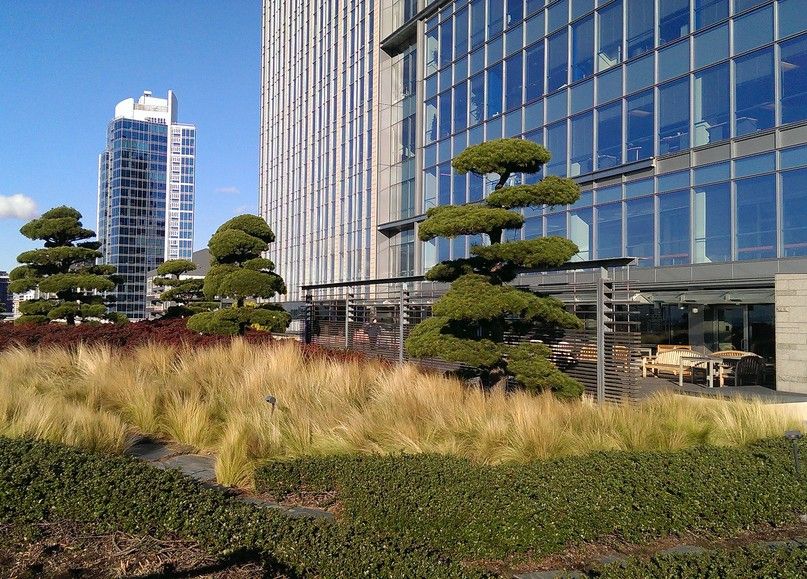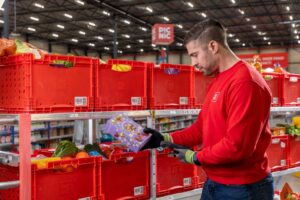Breathing in China isn’t easy but that might change soon, one green-roof at a time.
Just days after the EPA’s announcement of strong initiatives to cut U.S. CO2 emissions, China announced it will follow suit. Mandating the cuts that are most likely to start in 2016, China could use some strict regulation. Just last year, only three of the 74 cities that the Chinese government monitors met air quality standards, and the air problem appears to be getting worse.
“In response, the Chinese government has implemented many policies to help clean the air,” said Dana McIntyre, CEO and President of LiveRoof China Inc. “They need to, and they need something quickly.”
McIntyre knows green-roofs, and he knows them well. Working with a heavily patented green roof system called LiveRoof, the world’s first hybrid green roofsystem, McIntyre is quick to name the benefits: they insulate and cut heating and cooling costs by as much as 50 percent, reduce a building’s carbon footprint, reduce noise, prevent runoff and can double or even triple the life of your roof. McIntyre has been a certified provider of the LiveRoof system since 2008, and has worked and is the CEO of Plantedroof.com, the exclusive international sales portal for LiveRoof brand, which was established in 2010 to sell the LiveRoof system anywhere outside of the US or Canada. He has also set up LiveRoof exclusive distributors in Mexico, Chile, Australia and New Zealand. And now, his eye is set on China.
“In Beijing, there’s 900 million square feet that could have a roof with the green roof System. And in China, they don’t build buildings; they build cities. So the numbers are big.”
After keynoting the Green Roof Congress in 2012 in Hangzhou, China, McIntyre realized the opportunity. Because of the LiveRoof Systems’ extensive patents on their hybrid system, there was one hiccup: to use the system in China, McIntyre would need to find an efficient way to ship the manufactured plant modules from the US to China. “You can’t make plastic in America and ship it to China and be competitive,” McIntyre said. So in 2013, he incorporated LiveRoof China, Inc., which has licensed the patent rights for the necessary components to be manufactured in China, for China, at a fraction of the cost.
And contrary to what the name might suggest, LiveRoof doesn’t start on the roof. Sedum cuttings are first grown in patented modules and transferred to the roof once the plants are fully matured, allowing the cutting’s to root in a natural environment and provide a completely seamless look on day one of the installation. “A rooftop can hit 150 degrees or more in the summer time,” McIntyre said. “Trying to “farm” or nurture a green roof under such harsh conditions takes time, money, water and produces marginal results at best.”
Once on the roof, patented separators called Soil Elevators that divide individual modules are removed, allowing for the flow of water and nutrients between the plants. “If you have a typical 1’ by 2’ or any size tray such as used in other green roof systems, but you don’t allow them to share water and nutrients,” McIntyre said, “you don’t have a garden. It does not function naturally and often those types of systems fail. But with the LiveRoof® system, you do.”
McIntyer sees a lot of potential in China, and says he has the system and connections to make it happen. Partnering with Beijing Forestry University Forest Science Co, LTD., (BFUS) which is partially governmentally owned, LiveRoof® China will source all local materials. Once the patented plastic modules are manufactured, local agronomic experts make the planting decisions for each roof to make sure that the right plants are in place.
“We have secured initial seed funding of $150,000,” McIntyre said, “and will be completing our ongoing trials at BFUS this summer to determine the best soil mixes and green roof plants that will work in China’s various climates.”
After securing funding, the first plastic modules will be poured in September. From there, may the planting begin.
FEATURED PHOTO: Areedie/Flickr




